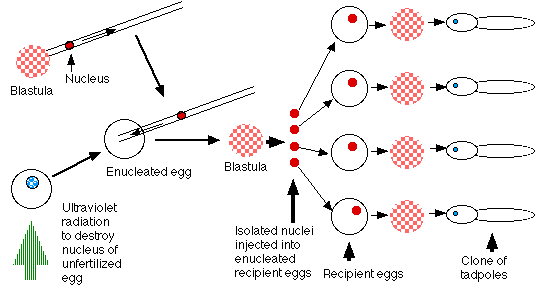Influence Of The Cytoplasm
Influence Of The Cytoplasm Assignment Help | Influence Of The Cytoplasm Homework Help
Influence of the Cytoplasm on the Nucleus
(1) In the gall midge Mayetiola destructor the zygote contains 40 chromosomes. The zygote nucleus divides thrice to give rise to eight nuclei which are evenly distributed in the egg cytoplasm. One of the eight nuclei moves towards the posterior pole and comes to lie in the germ plasm there. During the fourth division 16 nuclei are formed, of which two (primar germs cells) are separated by a constriction of the germ plasm at the posterior pole. During the peculiar fifth division 32 of the 40 chromosomes are eliminated from the nuclei, leaving 8 chromosomes in each nucleus.
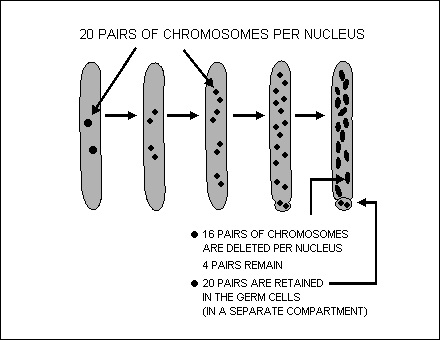
(2) An experiment by Spemann on the eggs of the newt demonstrates the influence of the cytoplasm on the nucleus. In the two-cell stage the egg is constricted by a hair along the cleavage furrow in such a way that both nuclei are on one side. The part with the nucleus continues to divide, but there is no division in the part without the nucleus. At some later stage of division, a nucleus slips through the protoplasmic bridge, from the dividing part to the enucleate part. This part then starts dividing and develops normally.
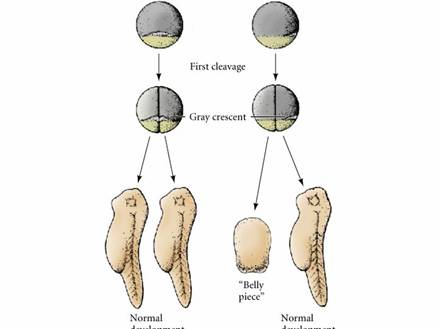
(3) Cytoplasmic variation in different development stages.
Salivary gland chromosomes have numerous bands which represent chromomeres of the many of the many strands of the chromosomes. The bands or chormomeres sometimes swell up to form chromosome puffs or Balbiani rings. The puffing follows a definite pattern during different stages of development, and represents RNA synthesis activity.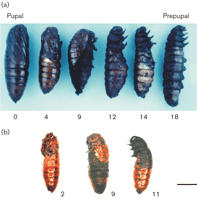
(4) Restriction in nuclear potentialities.
Enucleate host eggs of Rana pipiens were prepared by first activating them by priding with a fine glass needle, and then removing the nucleus. Nuclei from various donor embryos were transplanted into the enucleate host eggs, and further development of the egg was observed. It was found that when the donor nuclei were from embryos upto the blastula stage, the host eggs developed normally.(5) Stability of nuclear changes.
Enucleate host eggs of the frog were supplied by nuclei from a partially developed donor embryo. The eggs developed into normal embryos. Nuclei from the blastula stage of these embryos were injected into other enucleate eggs. There eggs also produced a clone of normal embryos. All the nuclei of these embryos have descended from one nucleus.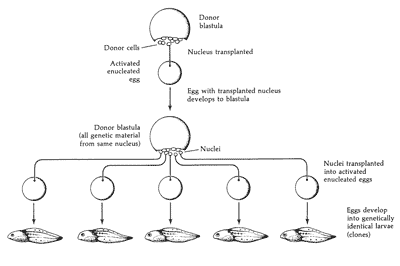
(6) Nuclear changes are permanent.
Eggs of Rana sylvatica were enucleated and fertilized by sperm of Rana pipiens. The R. sylvatica eggs containing the R. pipiens nuclei underwent 10 to 12 cleavages, forming a haploid blastula. Nuclei from the blastula were transplanted into enucleated R. pipiens eggs. Thus the R. pipiens nuclei were back in their own (R. pipiens) cytoplasm. Development, however, proceeded only upto the gastrula stage. This is due to incompatibility between the nucleus and the cytoplasm.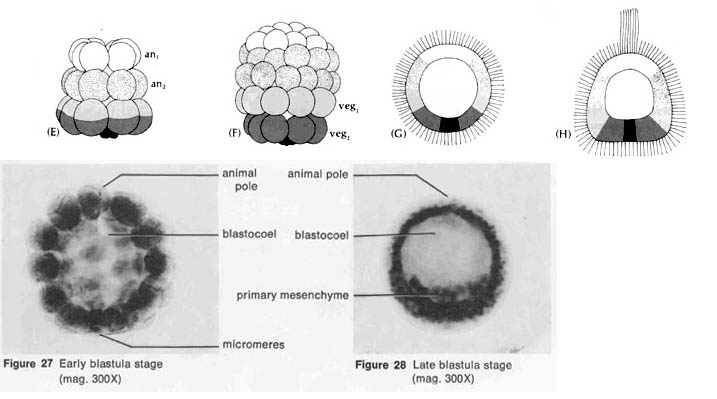
(7) Nuclear changes are not irreversible.
Nuclei from highly differentiated cells, like those of the intestinal epithelium, were transplanted into enucleated eggs. Even the nuclei of highly specialized cells contain information required for the formation of a new individual.